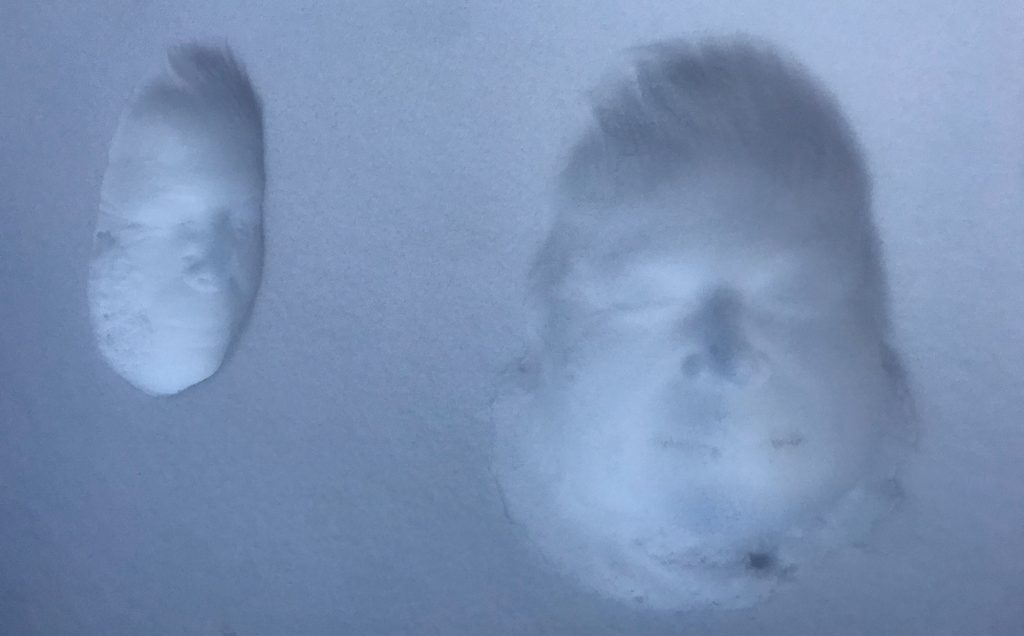This post is also available in Dutch.
Are you tempted, like me, to dive into all that snow? Or to even press your face into it and join the #snowfacechallenge? The hollow print resembles a real face, appearing to stick out of the snow! This happens because your brain is trying to make sense of what your eyes are perceiving, and sometimes your brain can make a mistake. We call this phenomenon an optical illusion and it reveals how visual perception works in the brain.
Hollow face illusion
The face challenge is an example of the ‘hollow face illusion’, in which a convex (hollow) face looks like it’s concave (sticking out). Watch the video below for a very strong version of this illusion:
Did you see a concave face almost all the time? No worries, most of us do.
You perceive with your eyes… and your brain
How is this possible? We perceive the world with our eyes, but this information is not as complete as we tend to think. For instance, our world might be 3D, our retina’s, the part of our eyes that receives information, is actually a flat 2D surface. Information is lost and It’s our brain that ‘rebuilds’ what we are looking at. It does so by making use of ‘extra’ information like contours, depth, contrast and movement. This type of information is called ’bottom-up’ because it’s incoming information that flows from our eyes upwards to our brain. But the brain also uses knowledge we have about the world. That type of information is called ‘top-down’ because it originates from the brain and influences what the eyes see in a downwards flow. What we perceive is the result of how the brain combines this bottom-up and top-down information. But the brain can be fooled…
The influence of knowledge
On our planet, the sun always sits in the sky, thus light comes from above. As a result, we have an implicit assumption about the direction of light, which is why we often mistake a Martian crater for a mountain. The hollow face illusion is a similar example of how knowledge influences our (visual) perception. In our daily life we perceive many, many faces and hardly any insides of masks. Therefore we are used to concave, or normal, faces, which creates an expectation. This expectation is so strong, that even though we know we are looking at a convex face, the brain still interprets it as a normal face and we perceive it as concave. In this case, the top-down outweighs the bottom-up information.
Fool the fooler
Can you change the strength of the illusion? Yes you can, by influencing the perception of the face. For instance, if the face is upside down, the illusion becomes less strong. On the contrary, the illusion is stronger when you are looking at highly familiar faces! Interestingly, this illusion is much less strong in patients with schizophrenia. This finding fits the idea that these people use top-down information less when perceiving social stimuli(such as a face).
You still have a couple of days to enjoy the Dutch snow and create your very own optical illusion… enjoy!
Source: https://michaelbach.de/ot/fcs-hollowFace/index.html
Image: from the author
Author & translation: Floortje Bouwkamp
Buddy & editor: Felix Klaassen
Editor translation: Rebecca Calcott
